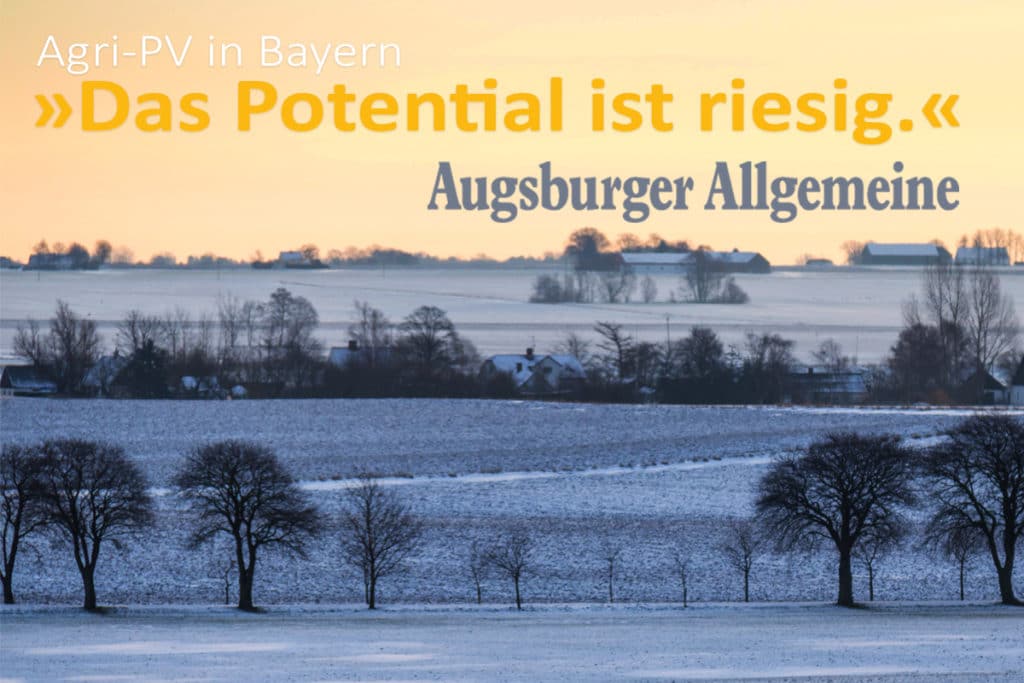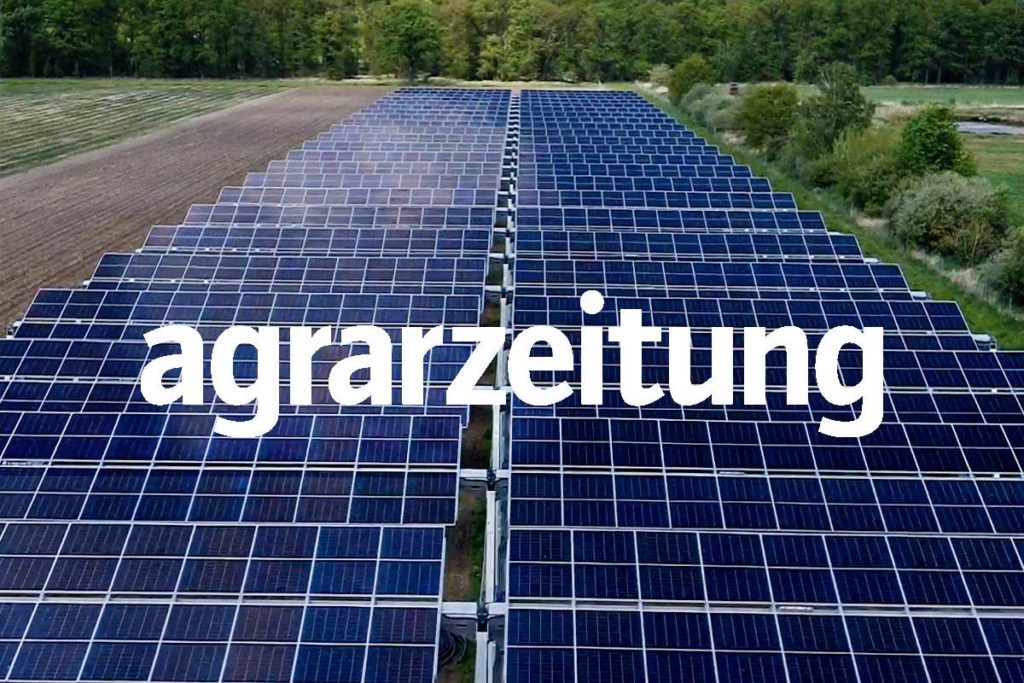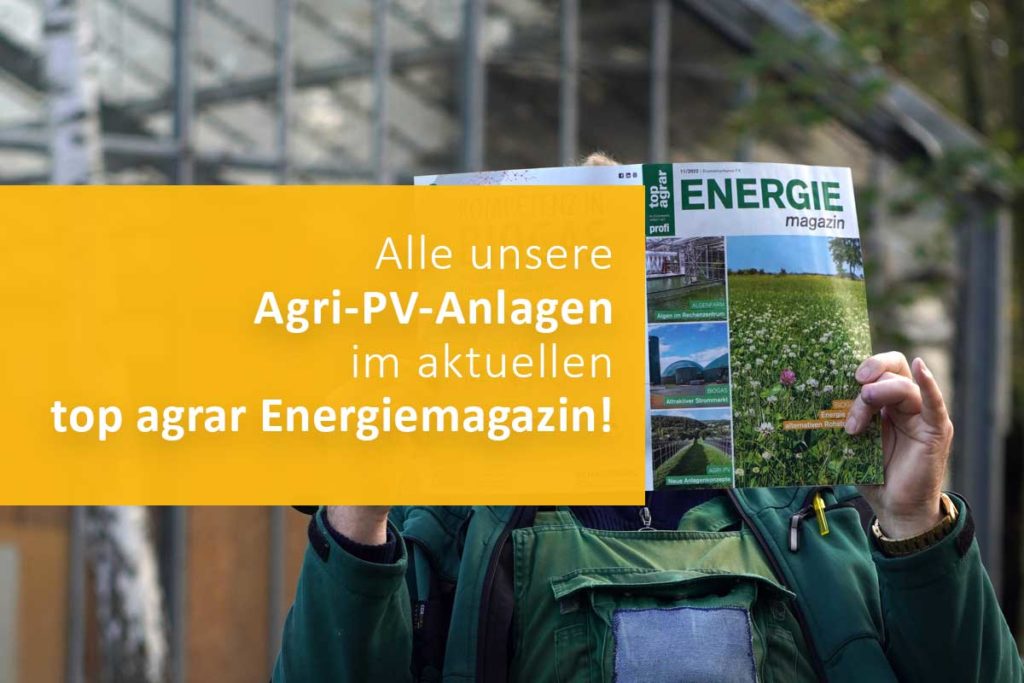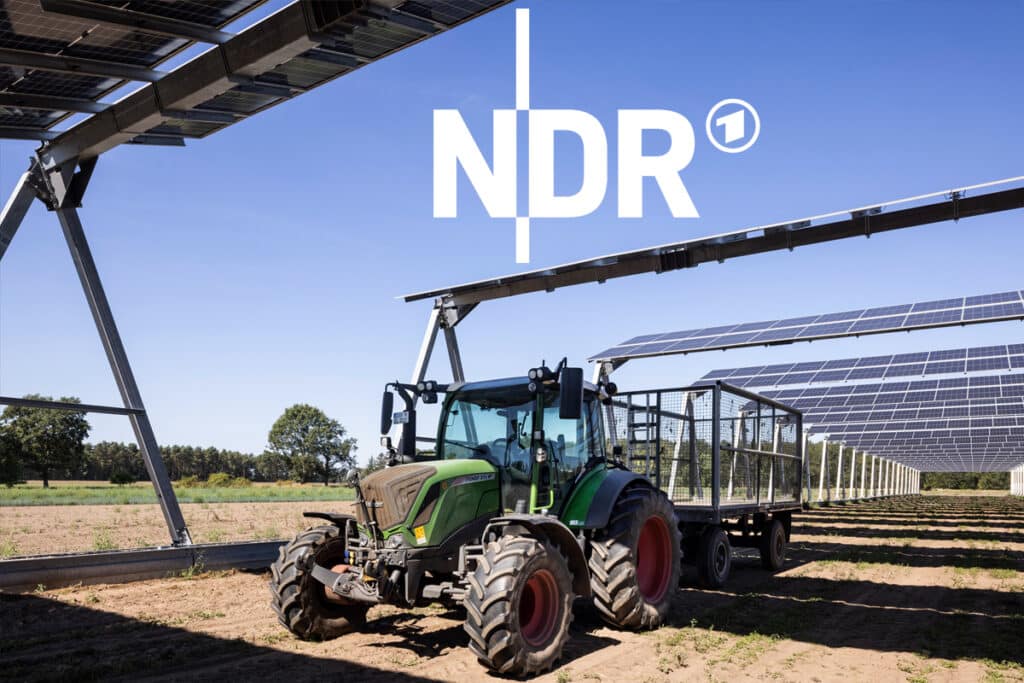Material de prensa y publicaciones para descargar
¿Le gustaría disponer de toda la información en un resumen compacto y claro?
En nuestro folleto encontrará todas las ventajas de nuestros sistemas agrofotovoltaicos para que pueda leerlas tranquilamente.
Verduras abajo, módulos solares arriba. El futuro de la agricultura alimenta el sol. Según los expertos, si se instalaran módulos solares en sólo el 4% de las tierras agrícolas de Alemania, se podría cubrir toda la demanda eléctrica del país. ¿Hasta dónde hemos llegado en este camino?
El Hessische Rundfunk nos preguntó sobre esto.
Hessischer Rundfunk, 01.02.2023

Cada vez se corre más la voz de que la fotovoltaica agrícola ayuda a desactivar la competencia por la tierra entre el uso agrícola y la producción de energía y, al mismo tiempo, refuerza la seguridad de los ingresos de los agricultores. Se trata de un aspecto clave, sobre todo en regiones con una gran demanda de tierras, un fuerte uso agrícola y un gran potencial de producción. Incluso con una calidad del suelo relativamente mala, las pérdidas de rendimiento pueden compensarse con energía solar.
También en Dillingen an der Donau son cada vez más los interesados, desde jóvenes agricultores hasta agricultores de distrito, que reconocen que este doble uso de las tierras de cultivo es sensato y sostenible, como informa el Augsburger Allgemeine.
Anke Müller, responsable de comunicación de AgroSolar Europe, explica en el informe que muchos también han reconocido la tendencia por otra razón:
“Para los agricultores, proteger sus cosechas es el objetivo más importante. Muchos de ellos ya han visto marchitarse sus cultivos por segunda o tercera vez debido a que hubo demasiado sol y poca agua en verano. Por eso, el sombreado que proporciona un sistema Agri PV es el argumento más importante para muchos de nuestros clientes, que buscan una función protectora para sus cultivos”.
Augsburger Allgemeine 19.12.2022

Haastert describe así el enorme potencial de Agri-PV: “Creo que Agri-PV será uno de los gamechangers tanto en la agricultura como en el sector energético y contribuirá significativamente a un proceso de cambio en ambos sectores en los próximos años”.


The NDR podcast “Mission Klima” accompanied our managing director Markus Haastert on a visit to our AgroSolar Top plant in the Wendland region. Why Agri-PV is attractive for farmers, what this summer has changed and what hurdles still exist, that’s what this episode of “Mission Klima” is about.
Issue 30 of the SPIEGEL shows our Agri-PV plant in Lüchow and reports on the advantages of dual use of land and the importance of protection systems in times of climate change. Because with protection systems plants can be protected from extreme weather conditions with periods of heat but also heavy rain.
“We approach Agri-PV from the agricultural side,” our Managing Director Markus Haastert is quoted as saying. The growing importance of water management in agriculture is also a topic for him and the SPIEGEL.
SPIEGEL 28.07.2022
Klicken Sie auf den unteren Button, um den Inhalt von iframe.mediadelivery.net zu laden.
AgroSolar Europe Managing Director Markus Haastert speaks at the East German Business Forum about energy and supply in times of climate change and the importance of cooperation between business and politics.
ZDF Morgenmagazin 13.06.2022
“When it comes to innovative PV concepts, Germany is lagging behind in the energy transition, as it so often does. Now, however, the BMU has announced funding for an agricultural PV plant on an industrial scale – a first.” …
Press release of the Federal Environment Ministry, 11.06.2021
“The Federal Environment Ministry is funding an innovative agro-photovoltaic system by the Steinicke company in Lüchow, Lower Saxony, with more than 400,000 euros. With the pilot project, agricultural land is to be used both for food production and, above that, for electricity generation through photovoltaics.” …
Newspaper for Municipal Economy (ZkW), 11.06.2021
“State Secretary Flasbarth personally handed over the funding notification to Steinecke. The photovoltaic system is to generate 756,000 kilowatt hours of solar electricity in the future, which will also partially flow for the farm’s own consumption.” …
PV Magazine, 11.06.2021
“At the Heggelbach organic farm on Lake Constance, they want to find out whether farming can function under a photovoltaic system. The pilot project with the PV systems is being scientifically accompanied by the Fraunhofer Institute in Freiburg. Can solar power from the field help to find new areas for renewable energies?” …
Bayrischer Rundfunk, 19.05.2020
“Every day in Germany, 61 hectares are released for settlement and transport areas. This corresponds to about 85 football fields. Saving land is therefore a declared goal of the Federal Government – just like the energy transition. So-called agrophotovoltaics could reconcile both.” …
Deutschlandfunk, 06.05.2019
“Food crops compete with energy crops and solar panels. Fertile farmland is becoming scarce. One way out could be agrophotovoltaics” …
Telepolis, 29.07.2019
“Partial shading under the solar modules increased agricultural crop yields, and the high solar radiation increased solar power production. Thus, the land use efficiency was 186 percent. “We assume that the plants coped better with the shading under the semi-transparent solar modules,” Andrea Ehmann.” …
Sonnenseite, 13.04.2019
Anke Müller
Head of Communication
E-Mail: a.mueller@agrosolareurope.de
Phone: +49 (0)30 609 881 091